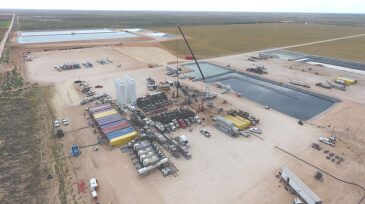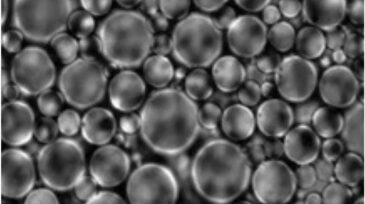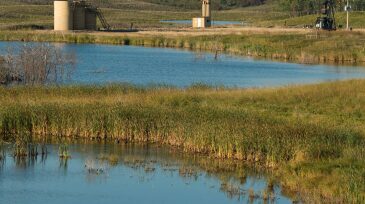Water management
This paper describes a decision-support system that integrates field data, system specifications, and simulation tools to quantify system performance, forecast operational challenges, and evaluate the effect of system modifications in water management.
If there is a key takeaway as 2025 comes to a close, it is the new level of diligence and depth in water-management planning, along with a growing recognition of the need to invest in more complex methods and sophisticated technologies.
This paper demonstrates that high-purity salts of calcium, magnesium, strontium, sodium, and lithium can be recovered from produced-water brine using a chemical-reaction pathway followed by vacuum-driven crystallization and a lithium-extraction process.
-
Volatile organic compounds (VOCs) present in crude oil can be released to the atmosphere from storage tanks, waste waters, and equipment leaks. A pilot-scale sequential biotrickling/biofiltration unit was designed and tested for removal of VOCs from a wastewater sump.
-
Finding water for hydraulic fracturing and then finding a use for it when it flows back are critical engineering problems to solve in the booming Permian Basin.
-
This paper describes a coreflooding program performed with sandpacks at different permeabilities, water qualities, and injection conditions.
-
Water management for unconventional projects continues to evolve at a rapid pace. What are some of the universal trends industry is adopting to handle higher produced water volumes and increased demand, and how do local dynamics impact the adoption of these trends?
-
Companies are bringing satellite monitoring to the unconventional oilfield—namely the Permian Basin—where they are training machine learning models to track and predict drilling and completions work.
-
Produced water has been an albatross around the neck of operators for a long time. Efforts to solve its challenges have been extensive and continue to evolve. These efforts can have a strong effect on the profitability of an operation.
-
This paper aims to provide an introduction to the early management of downhole produced water in strong waterdrive reservoirs using inverted electrical-submersible-pump (ESP) technology.
-
This paper presents pilot-testing results and economics from a novel electrochemical desalination technology for enhanced oil recovery (EOR) produced water.
-
Reusing produced water is becoming increasingly economic, available, and necessary. These four steps will guide operators to evaluate the viability of their options.













